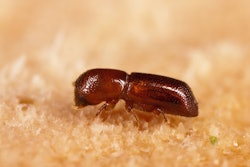 Photo: Jerry Lai/Flickr
Photo: Jerry Lai/FlickrOwl City really had it right regarding the mystery and beauty surrounding the firefly. When a garden or lawn is covered in those flashing little bulbs, you really “would not believe your eyes.”
Research done by the Vanishing Firefly Project at Clemson’s Public Service and Agriculture department says that many factors, including climate change and increased pesticide use, are contributing to the recent decline in firefly presence. So, what can you do to help attract more of these beauties to your customer’s yard?
Take a look at six ways you can not only bring fireflies to your customer’s yard, but also make the yard a paradise for fireflies.
Let the grass grow
When grass and shrubs are higher, fireflies have a wider variety of living places. Organizations like the National Gardening Association recommend that the perimeter of the yard should be allowed to grow wild to help create favorable habitat conditions.
Mowing less frequently can also help with this desired effect, and it can also help keep fireflies from accidentally being killed during mowing, as they tend to rest on grass blades throughout the day.
Create a water feature
Fireflies enjoy moisture, marshy areas and standing water, and most live in and mate where fields and forests meet streams. During mating season, they also congregate around small puddles and standing water.
Do keep in mind that standing water also attracts mosquitoes, so exercise caution when dealing with standing water. If mosquitoes are a big concern in your area, talk to your customers about installing a water feature, such as a small pond. This will not only add to the overall look of the landscape, it will also give fireflies and other helpful insects their needed moisture.
Turn off porch lights
Fireflies use their glowing for two reasons: attracting a mate and warding predators away from their toxic blood.
Researchers say that there can be up to five species of fireflies active in an area at one time, therefore males will use certain light patterns to let females of the same species know where they are. Females typically remain perched on tall grasses and signal back to males if they are interested.
With bright porch and garden lights on, the firefly lights are outshone, which can interrupt mating behavior. For more information on how outdoor lights are affecting the mating rituals of fireflies, click here.
Plant native trees
Habitat loss is one of the biggest problems facing fireflies. Along with keeping the grass at a taller height or letting the edge of the yard grow wild, planting native trees, especially pines, can help fireflies in a couple of ways.
The thick canopies that accompany pine trees block out artificial light that could potentially interfere with mating, and the needles and branches eventually drop, which creates an ideal spot for larvae to flourish.
Avoid pesticides
While there are many plus sides to using pesticides regularly in the yard, for the sake of attracting fireflies, put the pesticides down for a while.
According to studies done by the Vanishing Firefly Project, pesticide use is one of the leading causes of the decline in fireflies. Not only are they affected by the direct hit of pesticides, they can also be harmed by pesticide residue left on grass and around the yard.
Start a wood pile or add an extra one
There are a few firefly species that lay their eggs in brush on forest floors and in rotten logs. After hatching, the larvae are able to feed on worms, snails and slugs. If your customer has a reason to use logs in or around their home, encourage them to start an extra pile that can be a designated firefly home.
Or even if they don’t have a particular need for logs, just having a few placed around the edge of the yard could create a woodsy look and act as a home for fireflies.












